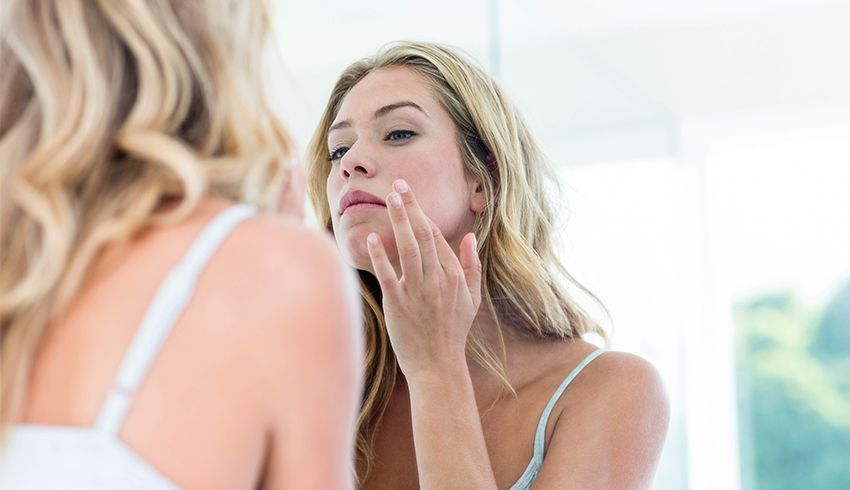What Causes Acne?

What Causes Acne?
Acne is not one size fits all. Depending on the cause of your acne, it may manifest as the odd pimple or a more chronic, lifelong condition. The truth is, up to 80% of us will experience acne at some point during our lifetimes. One of the best ways to kick acne to the curb? Get to the source. Here are five causes of acne, and our tips for banishing breakouts for good.
Causes Of Acne
These are a few of the factors that can contribute to the emergence of breakouts, blemishes and more chronic acne.
Clogged Pores
Every pimple begins the same way: with a clogged pore. Each of our pores is made up of a hair follicle containing a sebaceous (oil) gland which performs a key function for skin health. Sebaceous glands release sebum, a waxy, oily secretion that helps to lubricate and soften the skin’s surface. When sebum travels along the follicle towards the skin’s surface, it can get trapped by dirt, debris and dead skin cells blocking its path. Acne occurs when oil, impurities and bacteria combine, causing the infection and inflammation that we call a breakout.
Excess Oil Production
Is your skin extra oily? Oily skin is linked to a genetic predisposition to overproduce the hormone dihydrotestosterone (DHT) which causes the skin’s sebaceous glands to produce more sebum. When the skin produces too much oil, its pores enlarge and stretch in an attempt to contain the surplus. If excess oil becomes trapped, it can combine with the dead skin and bacteria that have settled inside the pore, causing breakouts. The severity of your acne breakouts can depend on your body’s reaction to excess oil production. According to WebMD: “Sebum levels that might cause a pimple or two in one person may result in widespread outbreaks – or even acute cystic acne – in another person.”
Bacteria
Everyone has acne bacteria living on their skin, but not all acne bacteria trigger pimples. According to Medical News Today: “Research suggests that the severity and frequency of acne depend on the strain of bacteria.” The strain of bacteria that contributes to acne is called Propionibacterium acnes, or P. acnes. This bacteria is generally harmless, but under certain conditions (such as in a clogged pore, surrounded by oil and no air) can trigger an immune response that causes inflammation of the surrounding tissues.
Hormones
Fluctuations in the body’s androgen levels, particularly during puberty and pregnancy, can also trigger acne. In fact, the Journal of Women’s Health asserts that up to 26% of women in their 30s battle breakouts. Whitney Bowe, MD tells Health: “When a woman’s androgen receptors are particularly sensitive, these hormones can trigger excess oil production and cause skin cells to become sticky, leading to clogged pores and breakouts.” Typically, hormonal acne will appear on the lower half of the face, appearing along the jawline, and flare up during your monthly cycle.
Genetics
Unfortunately, your own unavoidable genetic makeup often comes into play. Mona Gohara, MD tells Marie Claire: “Some people are genetically more prone to their sebaceous glands getting inflamed by hormones, oil and bacteria.” The odds are that if one of your parents had moderate to severe acne, you are likely to experience symptoms as well.
Acne Treatment
One of the best ways to tackle the causes of acne is through your skin care routine. To keep your skin clear and blemish-free, we recommend using our new Acne Advanced 3-Step Treatment System in conjunction with regular acne facials at your favorite Eminence Organics partner spa. The products in this innovative collection are designed to treat acne and prevent future breakouts, with results in as little as 28 days. Here’s why Lead Skin Care Trainer Natalie Pergar recommends using this organic solution to clear your complexion: